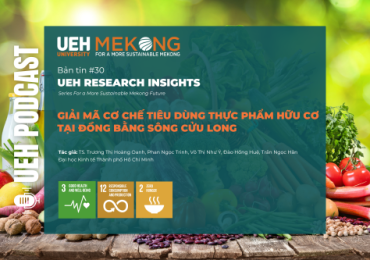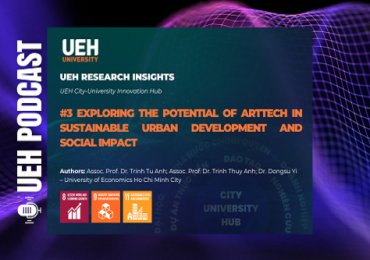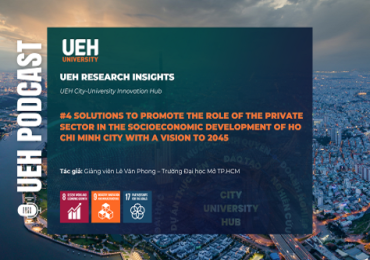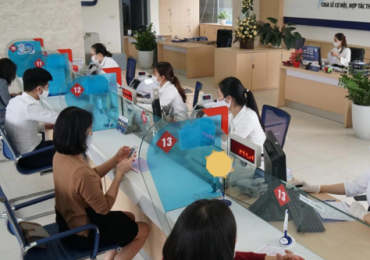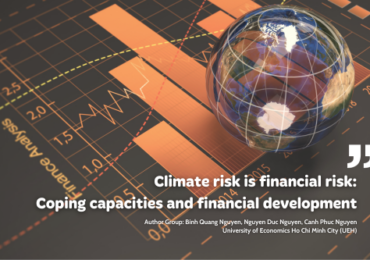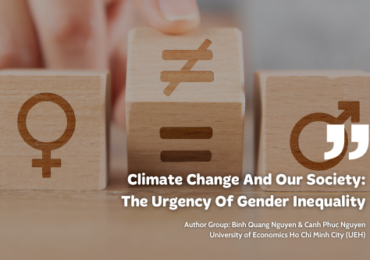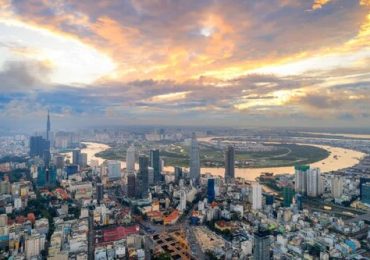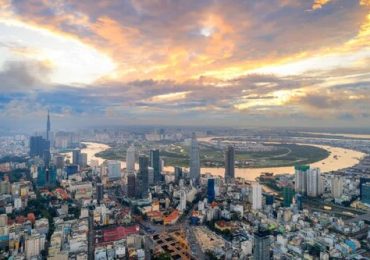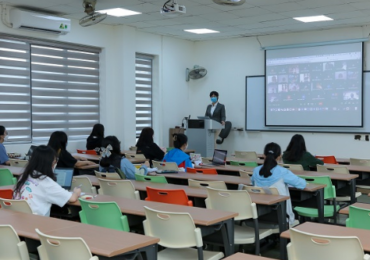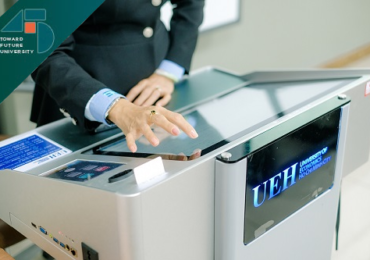[Research Contribution] Green Logistics in the 4.0 Era: Breakthrough Opportunity or Invisible Barrier?
13 August, 2025
Keywords: Green logistics, Industry 4.0, digital transformation, sustainable development, implementation barriers, logistics trends
Green logistics has emerged as a survival strategy for enterprises in the era of digital transformation and climate change. However, in Vietnam, the application of advanced technologies to the “greening” of logistics operations still faces multiple barriers. This research, conducted by a scholar from the University of Economics Ho Chi Minh City (UEH), is grounded in a systematic theoretical review, offering a comprehensive picture drawn from global experiences and proposing solutions to foster the integration of Industry 4.0 into green logistics.

Why Study Green Logistics 4.0?
Against the backdrop of climate change and global commitments to emission reduction, the logistics sector—serving as the lifeline of trade and supply chains—has become one of the largest sources of CO₂ emissions. The transport system alone accounts for approximately 25% of global CO₂ emissions (Agyabeng-Mensah et al., 2020). In Vietnam, the transition towards a green logistics model is no longer a “voluntary” choice but a mandatory requirement to maintain competitiveness, especially as major markets such as the EU, the US, and Japan tighten regulations on “carbon footprints” and green standards.
Not only large export corporations but also domestic logistics companies in Vietnam—from warehousing and transportation to e-commerce—are under increasing pressure to “green” their operations to avoid exclusion from global supply chains.
At the same time, the wave of Industry 4.0 offers transformative opportunities. Technologies such as Artificial Intelligence (AI), the Internet of Things (IoT), blockchain, smart sensors, and automated robotics not only optimise operations but also help reduce costs, save energy, and minimise resource waste.
However, in Vietnam, gaps remain in technological readiness, data infrastructure, workforce skills, and supportive policies. Most small and medium-sized enterprises (SMEs) still struggle to invest in smart warehousing systems, electrified vehicles, or advanced supply chain management platforms.
Research Approach
This study employs the Systematic Literature Review method on 157 international journal articles sourced from the two most reputable databases—WoS and Scopus—to conduct a comprehensive analysis of how Industry 4.0 technologies are being applied in green logistics practices.
Specifically, the research identifies six clusters of green logistics practices and the integration of technology within each:
- Green transportation: Electric vehicles, Transportation Management Systems (TMS), and UAV-based route monitoring.
- Green warehousing: IoT, AI, Augmented Reality (AR), QR codes, and automated Warehouse Management Systems (WMS).
- Green procurement and packaging: Big Data analytics, blockchain-based traceability, and monitoring sensors.
- Waste collection and treatment: Sorting robots, closed-loop logistics systems, and waste-flow prediction algorithms.
- Green product design: Eco-friendly materials and enhanced reuse enabled by digital technologies.
- Decision support: Digital platforms integrating real-time supply chain data.
A distinctive feature of the study is its analytical model for identifying implementation barriers, classified according to stakeholder groups:
- Internal to enterprises: Lack of digital skills, limited budgets, insufficient leadership commitment, and a corporate culture that does not prioritise environmental factors.
- External to enterprises: Unclear legislation, lack of financial incentives, insufficient supply chain collaboration, consumer indifference, and high cybersecurity risks.
The study also highlights notable differences in the adoption of Green Logistics 4.0 (GL 4.0) across industries:
- The automotive and electronics sectors tend to lead adoption due to their complex supply chains and higher capacity for technological investment.
- Food, retail, and e-commerce sectors prioritise traceability technologies, temperature monitoring, and intelligent inventory control.
- Conversely, agriculture, fisheries, and small-scale processing remain heavily reliant on manual labour, facing significant digitalisation challenges.
Novel Insights
Green Logistics 4.0 is no longer a question of “whether to adopt” but a long-term strategic imperative requiring coordination among people, technology, and policy.
- The deployment of GL 4.0 should be tailored to each industry sector; a one-size-fits-all approach is ineffective.
- SMEs, which make up the majority of Vietnam’s supply chain, require strong support in finance, technology, and workforce training.
- Government bodies and industry associations play a crucial role in creating a clear legal framework, introducing incentives for “greening,” and ensuring that data and technology are shared securely and transparently.
Recommendations from the Study
For enterprises:
- Assess readiness in terms of technology, human resources, and capital to develop sector-specific green logistics transition roadmaps.
- Strengthen internal training on Industry 4.0 technologies and sustainable development mindsets.
- Collaborate with technology providers to pilot small-scale green logistics solutions before scaling up.
For the government and regulators:
- Establish standards, incentive policies, and support programmes for the adoption of green logistics (e.g., tax exemptions, green credit facilities, carbon certification).
- Invest in shared digital infrastructure to facilitate interregional and cross-sector logistics data sharing.
For the community and consumers:
- Promote public campaigns to raise awareness of green consumption and encourage the use of eco-friendly logistics services.
- Incentivise e-commerce platforms and delivery apps to develop green delivery models using electric vehicles and biodegradable packaging.
Conclusion: From Vision to Action
The study affirms that transitioning to a green logistics model powered by Industry 4.0 technologies is entirely feasible, particularly as Vietnam actively participates in global commitments to emission reduction and sustainable development.
Nonetheless, the journey is not without challenges and requires multi-stakeholder collaboration—from government bodies and enterprises to technology providers and consumers. With the right support mechanisms, Green Logistics 4.0 can not only enhance operational efficiency but also generate long-term environmental, social, and economic value.
This serves as a reminder that:
“Sustainable development is not a luxury, but a wise choice for survival and growth in the future.”
Author: Dr. Hoang Thu Hang – Faculty of International Business & Marketing, University of Economics Ho Chi Minh City
This article is part of UEH’s “Research Contribution For All” series, which aims to disseminate applied research and knowledge to the community. Readers are invited to follow upcoming issues of UEH Research Insights.
Credits: Author, UEH Communications & Partnership Development Department

[Podcast] Recommendations for University education development
14 February, 2025
[Podcast] Developing Vung Tau into a World-Class Tourism City
16 January, 2025
[Podcast] Postdigital Design Strategies for Media Art
6 January, 2025
[Podcast] NFTs – Artistic Innovation or Just a New Hype?
27 December, 2024
[Podcast] Boosting Employee Creativity with Constructive Feedback
23 November, 2024
[Podcast] “Dutch Disease” in Remittances and the Case of Vietnam
4 November, 2024
[Podcast] Latest approaches for sustainable universities
11 July, 2024
Data Law – Part 1: Necessity for a New Approach
18 May, 2024
Advertising Evaluation on Tiktok Platform
14 May, 2024
[Podcast] Advertising Evaluation on Tiktok Platform
13 May, 2024
Promoting Learner Autonomy in English Language Learning (Part 1)
24 November, 2023
ArtTech And Sustainable Development
27 October, 2023
Motivation of EFL Vietnamese Students in Economics-related Majors
12 October, 2023
Climate Change And Our Society: The Urgency Of Gender Inequality
12 October, 2023
People Analytics in Vietnam
10 March, 2022
Revolution in Experimental Economics
30 January, 2022
The Sharing Economy: Governance Issues in Vietnam
24 January, 2022
Employment Policy For Ho Chi Minh City in Post-social distancing Period
28 December, 2021
Lifelong learning at UEH: Towards a Sustainable University
28 December, 2021
Building a Decentralized Stock Market based on Blockchain Technology
24 December, 2021
Consumer price index from big data mining perspective (Big data)
17 November, 2021
Overview Of Digital Currency – Part 5: DIEM Private Stabilized Currency
11 November, 2021






